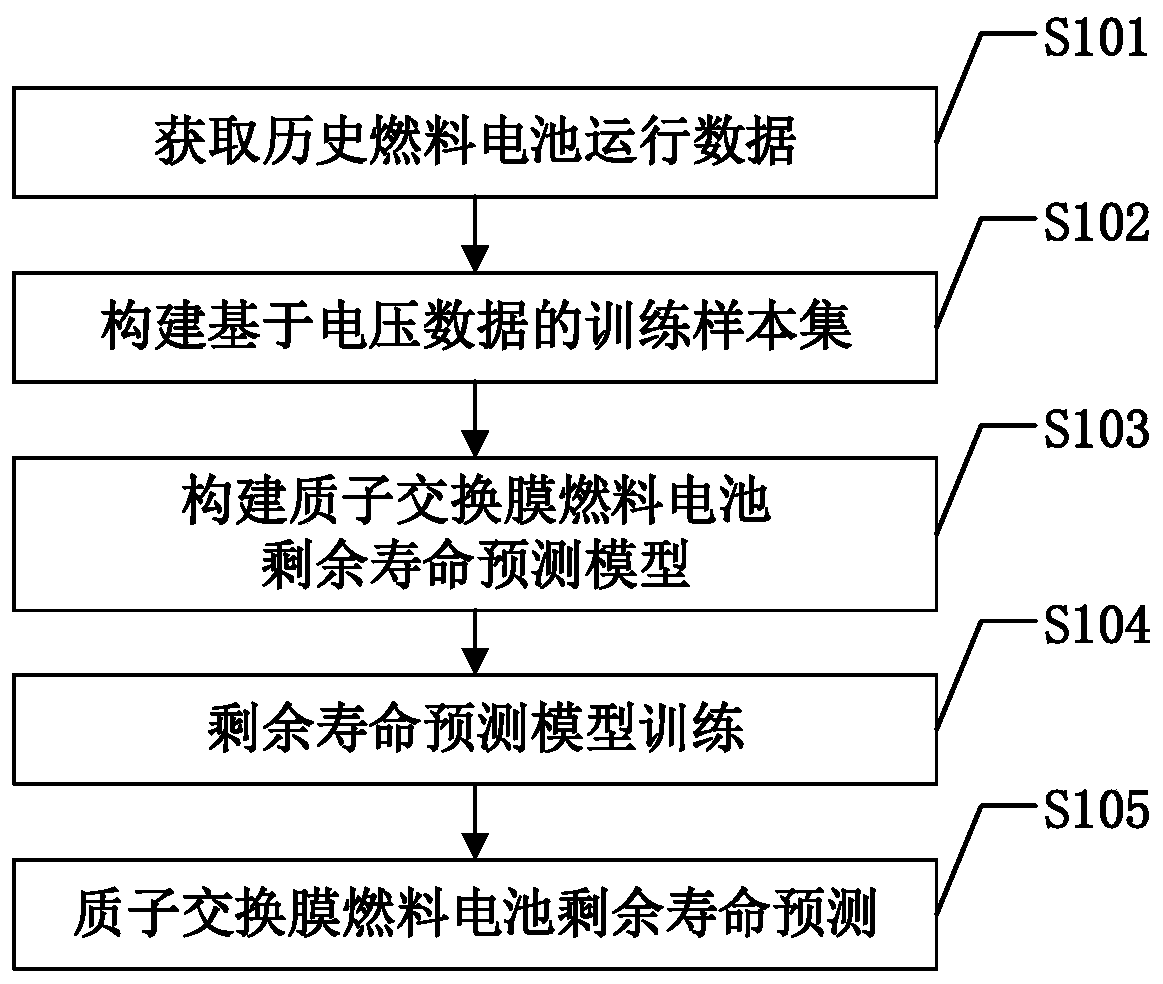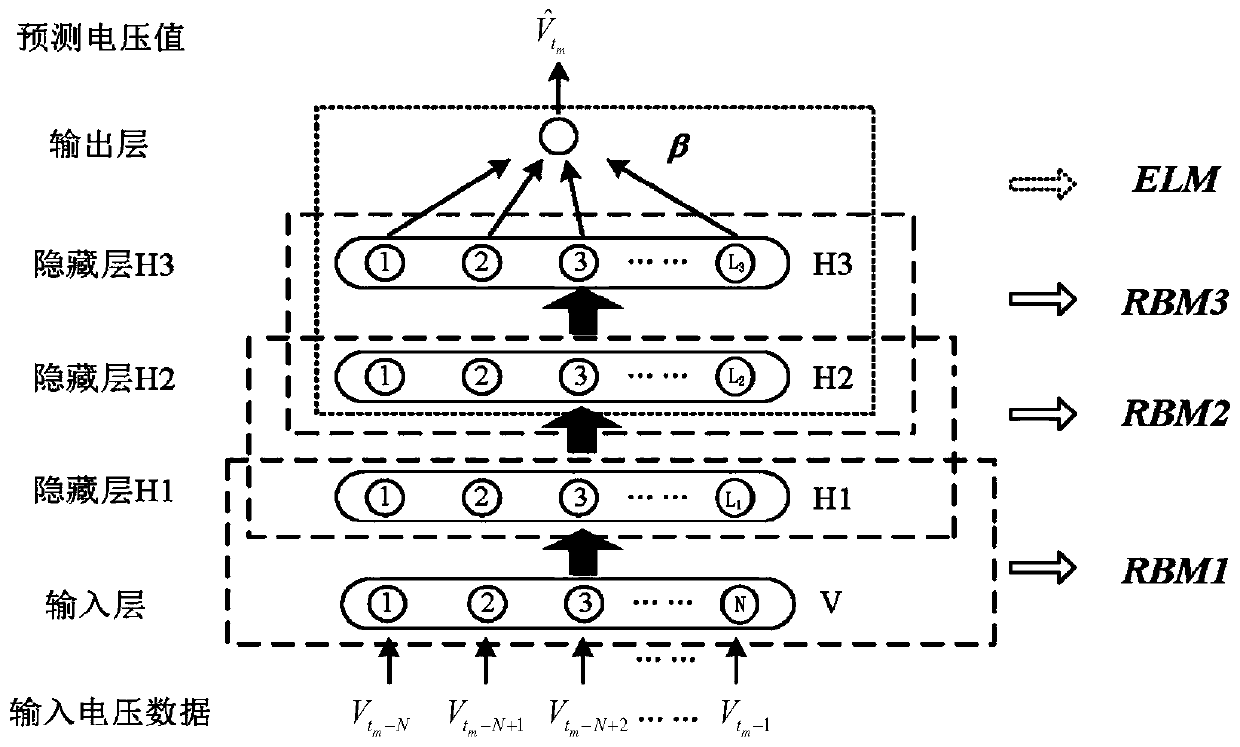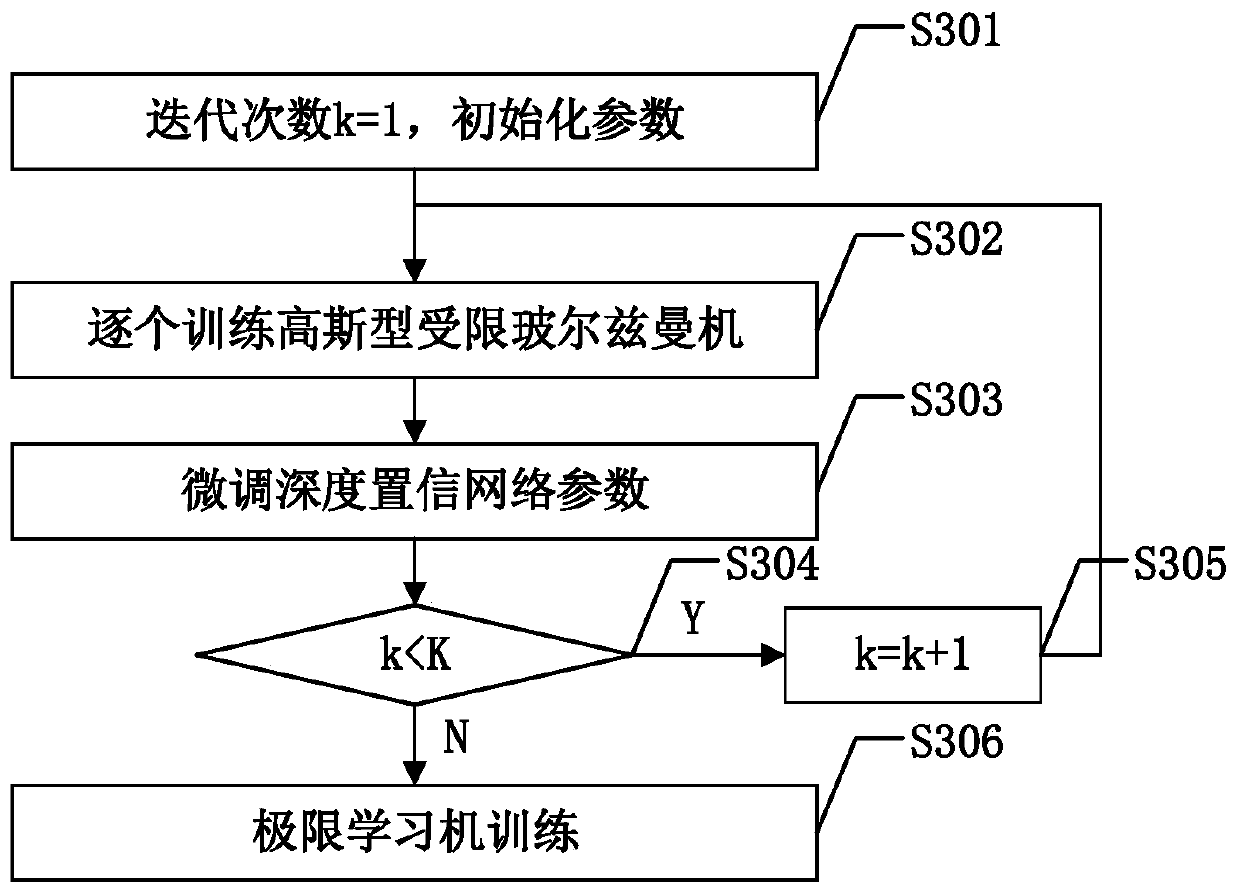Method for predicting residual life of proton exchange membrane fuel cell
A proton exchange membrane, fuel cell technology, applied in the measurement of electricity, measurement devices, measurement of electrical variables, etc., can solve the problem of difficult to describe the nonlinear decay process of fuel cells, predict performance fluctuations and noise interference, aging data The quantity and quality are sensitive and other problems to achieve the effect of improving generalization performance, improving accuracy, and improving accuracy
- Summary
- Abstract
- Description
- Claims
- Application Information
AI Technical Summary
Problems solved by technology
Method used
Image
Examples
Embodiment
[0032] figure 1 It is a specific implementation flow chart of the proton exchange membrane fuel cell remaining life prediction method of the present invention. Such as figure 1 As shown, the specific steps of the proton exchange membrane fuel cell remaining life prediction method of the present invention include:
[0033] S101: Obtain historical operation data:
[0034] In the present invention, the output voltage of the proton exchange fuel cell is used as its performance attenuation index, so it is first necessary to obtain the output voltage of the proton exchange fuel cell at several consecutive moments, and normalize the output voltage to [0,1] to obtain Normalized output voltage V t and form the output voltage queue [V 1 ,V 2 ,...,V T ], where t=1,2,...,T, T represents the number of output voltages.
[0035]The reason for the normalization process is that the present invention uses a deep belief network in the construction of the proton exchange membrane fuel cell...
PUM
 Login to View More
Login to View More Abstract
Description
Claims
Application Information
 Login to View More
Login to View More - R&D
- Intellectual Property
- Life Sciences
- Materials
- Tech Scout
- Unparalleled Data Quality
- Higher Quality Content
- 60% Fewer Hallucinations
Browse by: Latest US Patents, China's latest patents, Technical Efficacy Thesaurus, Application Domain, Technology Topic, Popular Technical Reports.
© 2025 PatSnap. All rights reserved.Legal|Privacy policy|Modern Slavery Act Transparency Statement|Sitemap|About US| Contact US: help@patsnap.com



